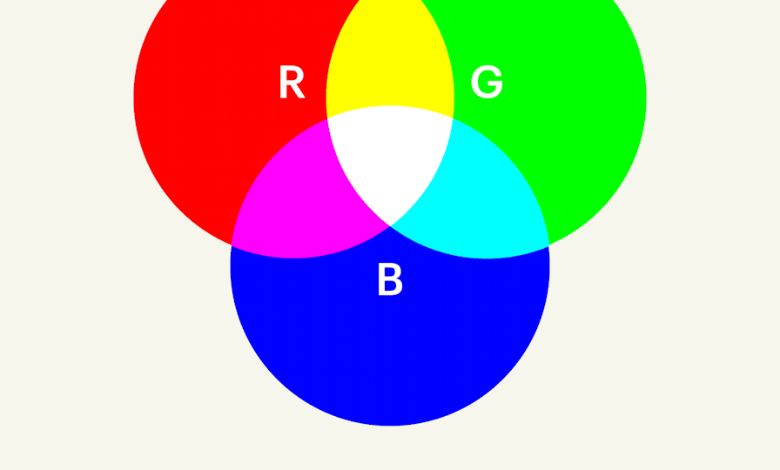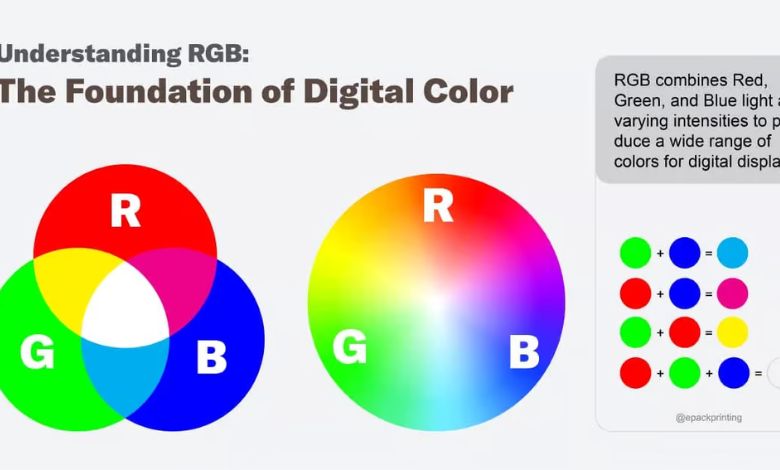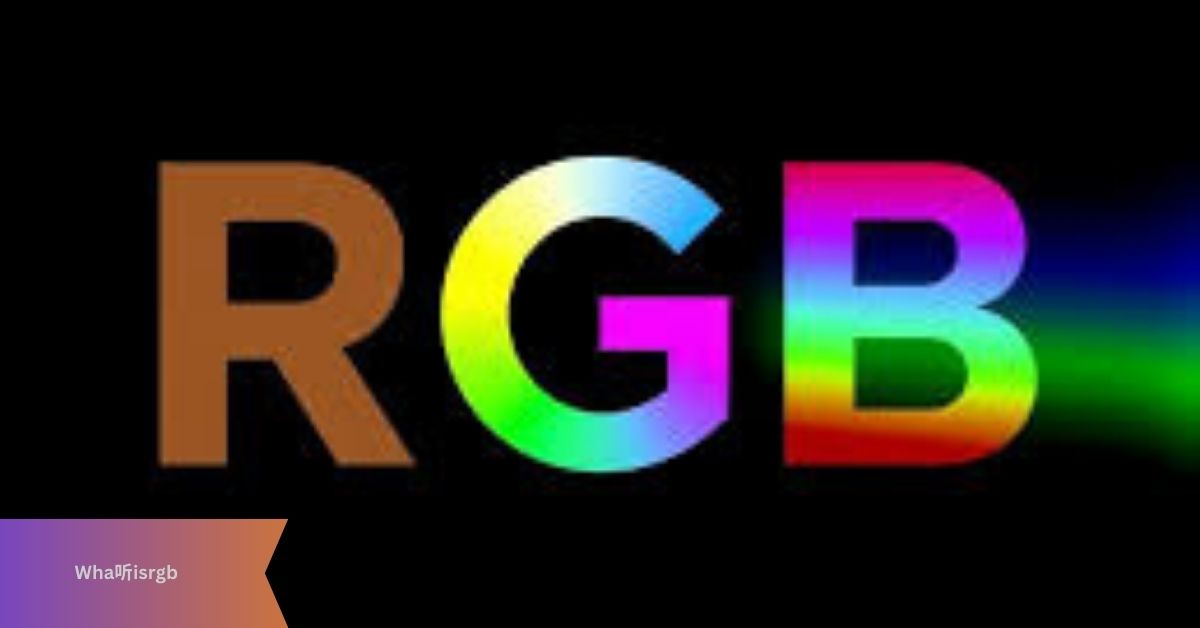In the world of color theory and digital imaging, you may have encountered the term RGB—a shorthand for Red, Green, and Blue. But have you ever wondered: What is RGB? Whether you’re a graphic designer, a photographer, or someone exploring the technicalities of digital media, this article will break down the importance of RGB and how it shapes the way we perceive colors in the digital world.
This article aims to explain everything you need to know about RGB, its role in various industries, and how it impacts the digital experiences we engage with daily. We will go beyond existing sources, offering a fresh perspective to help you understand the science behind RGB in a way that’s easy to digest.
What Does RGB Mean?
RGB Stands for Red, Green, and Blue
RGB is an acronym that represents Red, Green, and Blue—three primary colors that form the foundation of color displays in digital systems. Unlike physical color mixing, which relies on cyan, magenta, and yellow (CMY), RGB is based on additive color mixing. In simple terms, the colors are created by adding different intensities of light. This principle is fundamental in displays like computer screens, television sets, and projectors.

The Science Behind RGB
At the core of RGB is the concept of light emission. When combined at full intensity, Red, Green, and Blue create pure white light. When mixed at lower intensities or different combinations, they produce millions of colors. This blending of light is known as additive color mixing.
- Red: Represents the longest wavelength of light visible to the human eye.
- Green: Sits in the middle of the visible spectrum.
- Blue: Has the shortest wavelength of the three primary colors.
By adjusting the intensity of these three colors, we can produce any color in the visible spectrum, making RGB essential for digital color reproduction.
Also Read: The Ultimate Guide to the 4808037616 Phone!
How Does RGB Work in Digital Displays?
Pixels and Color Representation
Every screen you look at—whether it’s a smartphone, TV, or computer monitor—relies on RGB to display colors. The image you see on a screen is composed of tiny elements called pixels. Each pixel contains three sub-pixels: one for red, one for green, and one for blue.
Each sub-pixel can vary in intensity (brightness), ranging from 0 (no light) to 255 (maximum light). By combining different intensities of Red, Green, and Blue, each pixel can produce over 16 million colors. This large range of possible colors is what makes digital displays so rich and vibrant.
The Role of Software and Hardware
Digital screens are just one piece of the puzzle. On the software side, programs like image editors (e.g., Adobe Photoshop), video players, and web browsers use RGB values to render colors accurately. These RGB values are often specified in a format called hexadecimal (e.g., #FF5733), or sometimes RGB notation (e.g., rgb(255, 87, 51)).
On the hardware side, devices like LEDs and LCDs are built to support RGB color mixing. The combination of pixel technology and software tools ensures that we get the vibrant, true-to-life colors we see every day.
RGB vs. CMYK: Understanding the Difference
RGB and Additive Color Mixing
RGB relies on additive color mixing, meaning colors are created by combining light in various intensities. As the light sources mix, the resulting color gets brighter, and at full intensity, it creates white light.
CMYK and Subtractive Color Mixing
On the other hand, CMYK (Cyan, Magenta, Yellow, and Key/Black) is a subtractive color model, used primarily in the printing industry. CMYK is based on the idea of mixing physical inks, where combining all the colors creates darkness or a lack of color, rather than light.
While RGB is used for displays and digital media, CMYK is ideal for print materials because it simulates how colors absorb and reflect light off paper. Understanding both models is key to grasping the differences between digital screens and physical prints.
The Importance of RGB in Different Industries
1. Web Design and User Experience
Web design heavily relies on RGB for creating appealing, user-friendly interfaces. When you’re browsing a website, the colors you see are generated using the RGB model. Designers must understand how RGB works to ensure that websites look vibrant and accessible on all devices, from mobile phones to high-definition displays.
RGB also plays a crucial role in accessibility. Web developers must make sure that their color choices provide sufficient contrast for individuals with color blindness, ensuring that the website is usable for a broader audience.
2. Digital Photography and Videography
Photographers and videographers need to understand RGB to ensure that their images and videos appear as intended on digital screens. Cameras use RGB sensors to capture images in real time. When you edit an image or video, you manipulate its RGB values to adjust its brightness, contrast, and saturation, ultimately achieving the desired effect.
Also Read: Editor Benjamin Tech Guru Keezy.Co!
How RGB Affects Color Perception
Color Perception in Different Devices
Different devices can display colors differently based on their individual RGB profiles. For example, a photo viewed on a smartphone screen may look different from the same photo displayed on a high-end monitor or television. This difference occurs due to variations in color calibration and the way each device handles RGB values.
Many modern devices come with technologies like HDR (High Dynamic Range), which allows for greater color depth and more accurate reproduction of RGB values, giving users a more lifelike experience.
Color Spaces and Gamuts
When dealing with RGB, it’s important to understand the concept of color spaces and color gamuts. A color space is essentially a specific range of colors that a device or medium can reproduce. Common color spaces like sRGB (Standard RGB) are designed to cover a wide array of colors, while others like Adobe RGB have an extended gamut for professional photographers and designers.
RGB in Action: Practical Applications
1. Gaming
RGB lighting is commonly seen in gaming setups, from RGB-enabled keyboards to computer cases. The ability to customize lighting effects adds a visual dimension to the gaming experience. It’s not just about aesthetics; RGB lighting can be functional too, providing visual feedback during gameplay, such as changing colors to indicate in-game events.

2. Television and Movie Production
In the world of film and television, RGB color grading is used extensively to give the final video a particular mood or look. Colorists manipulate the RGB values of a scene to create a desired atmosphere—whether that’s a cool, blue tone for a thriller or warm, red hues for a romantic scene.
Common Challenges with RGB
1. Color Calibration
One of the challenges of working with RGB is ensuring that colors appear the same across all devices. Because screens can vary in terms of brightness, contrast, and the range of RGB colors they can display, color calibration is necessary for accurate color reproduction.
2. Color Differences Between Devices
As mentioned earlier, RGB values might look different on one device compared to another. A photo edited on a high-end monitor might appear much darker or lighter when viewed on a smartphone. This is why professionals in graphic design, photography, and video editing often rely on color calibration tools to ensure consistency.
Also Read: Comprehensive Guide to 770-404-4750 – Insights, Interpretations!
FAQs About RGB
1. What Does RGB Stand For?
RGB stands for Red, Green, and Blue, which are the three primary colors used in light-based systems to create a wide range of colors.
2. Why Is RGB Important?
RGB is important because it is the standard color model used in digital displays, including monitors, televisions, and projectors. Understanding RGB allows you to comprehend how colors are created and displayed on screens.
3. How Does RGB Create Different Colors?
RGB creates different colors by varying the intensity of red, green, and blue light. When all three colors are combined at full intensity, the result is white light. By adjusting the brightness of each color, millions of colors can be created.
4. What’s the Difference Between RGB and CMYK?
RGB is used for digital displays (additive color mixing), while CMYK is used in printing (subtractive color mixing). RGB relies on light emission, while CMYK relies on physical ink mixing.
5. Can RGB Colors Look Different on Different Devices?
Yes, the way RGB colors appear can vary depending on the device’s screen and its color calibration. This is why professionals often calibrate their devices to maintain consistent color accuracy.
Conclusion
Understanding RGB is essential for anyone working in digital media, design, photography, or even technology. This three-color model, based on the additive mixing of red, green, and blue light, forms the foundation for how we interact with color in the digital world. Whether you’re designing a website, editing a photo, or simply adjusting the settings on your TV, RGB plays a crucial role in ensuring the colors are vibrant and accurate.
By learning how RGB works and how it influences color reproduction, you can better appreciate the technology behind the screens we use every day.









+ There are no comments
Add yours